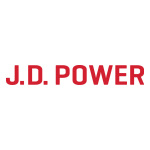High Cost, Lack of Information Provided and Low Levels of Trust Leave Bad Taste in Utility Customers’ Mouths
TROY, Mich.–(BUSINESS WIRE)–The combined water and sewer bill for a typical household in the United States has increased 54.8% since 20121 amid a seemingly non-stop barrage of safety alerts, growing concerns about per- and polyfluorinated alkyl substances (PFAS) contamination and supply shortages. This has not been a favorable environment for nurturing customer confidence in local water utilities. According to the J.D. Power 2024 U.S. Water Utility Residential Customer Satisfaction Study,SM released today, 41% of customers say they do not feel the water provided by their local utility is safe to drink.
“Water utilities need to do a better job of communicating with their customers about the efforts they are making to keep water supplies safe and the steps they are taking to shore up infrastructure,” said John Hazen, managing director of utilities intelligence at J.D. Power. “When customers are aware of the work utilities are doing to maintain infrastructure and they feel confident drinking the water, overall satisfaction scores rise considerably. The issue is that many utilities are not engaging in this type of proactive communication.”
Following are key findings of the 2024 study:
- Water safety in the spotlight: Overall, 59% of residential water utility customers say their unfiltered tap water supply is either safe or very safe to drink. The remaining 41% of customers do not perceive their water is safe to drink.
- Generational perceptions of water safety: Perceptions of water safety increase with age of customers. Those in the Pre-Boomer2 and Boomer generations are the most likely to say their water supply is safe to drink, 80% and 69%, respectively. Among Gen X customers, 60% say their tap water is safe. That percentage falls to 53% among Gen Y customers and 45% among Gen Z customers.
- Infrastructure communications essential: Proactive communication is the single most important step water utilities can take to increase customer satisfaction. Among customers who say their utility does a good job maintaining its current water infrastructure, overall satisfaction scores rise 229 points (on a 1,000-point scale). However, water utilities are delivering on this key performance indicator just 87% of the time.
- Utilities mum amid growing PFAS concerns: News reports about PFAS contamination in U.S. tap water have spurred growing consumer concern about drinking water safety. Despite widespread news coverage, just 2% of residential water utility customers say they recall receiving any communication from their utility about PFAS.
Study Rankings
The study measures customer satisfaction with water utilities in eight geographic regions. Highest-ranked utilities and scores, by region, are as follows:
- Midwest Large: Greater Cincinnati Water Works (546)
- Midwest Midsize: Metropolitan Utilities District (Omaha) (538)
- Northeast Large: New Jersey American Water (562)
- Northeast Midsize: Monroe County Water Authority (583)
- South Large: Gwinnett County (569)
- South Midsize: Cobb County Water System (587) (for a second consecutive year)
- West Large: Seattle Public Utilities (568)
- West Midsize: Irvine Ranch Water District (592) (for a third consecutive year)
See the rank chart for each segment at http://www.jdpower.com/pr-id/2024036.
The U.S. Water Utility Residential Customer Satisfaction Study was redesigned for 2024. Now in its ninth year, the study measures satisfaction (on a 1,000-point scale) among residential customers of 92 water utilities that deliver water to populations of at least 400,000 and results are reported for eight geographic regions in two size categories: Midwest Large; Midwest Midsize; Northeast Large; Northeast Midsize; South Large; South Midsize; West Large; and West Midsize. Overall satisfaction is measured by examining eight core dimensions on a poor-to-perfect 6-point rating scale. Individual dimensions measured are (in order of importance): information provided; quality and reliability; level of trust; ease of doing business; total monthly costs; people; resolving problems or complaints; and digital channels. This year’s study is based on the responses of 32,833 residential water utility customers and was conducted from June 2023 through March 2024.
For more information about the U.S. Water Utility Residential Customer Satisfaction Study, visit https://www.jdpower.com/business/utilities/water-utility-residential-customer-satisfaction-study.
About J.D. Power
J.D. Power is a global leader in consumer insights, advisory services, and data and analytics. A pioneer in the use of big data, artificial intelligence (AI) and algorithmic modeling capabilities to understand consumer behavior, J.D. Power has been delivering incisive industry intelligence on customer interactions with brands and products for more than 55 years. The world’s leading businesses across major industries rely on J.D. Power to guide their customer-facing strategies.
J.D. Power has offices in North America, Europe and Asia Pacific. To learn more about the company’s business offerings, visit JDPower.com/business. The J.D. Power auto-shopping tool can be found at JDPower.com.
About J.D. Power and Advertising/Promotional Rules: www.jdpower.com/business/about-us/press-release-info
_________________
1 Bluefield Research, U.S. Municipal Water & Sewer: Annual Utility Rate Index 2023, https://www.bluefieldresearch.com/research/u-s-municipal-water-sewer-annual-utility-rate-index-2023/
2 J.D. Power defines generational groups as Pre-Boomers (born before 1946); Boomers (1946-1964); Gen X (1965-1976); Gen Y (1977-1994); and Gen Z (1995-2006). Millennials (1982-1994) are a subset of Gen Y.
Contacts
Media Relations Contacts
Geno Effler, J.D. Power; West Coast; 714-621-6224; [email protected]John Roderick; East Coast; 631-584-2200; [email protected]




